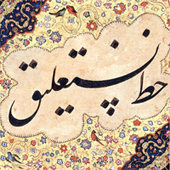
1402 Aq Qoyunlu Turkomans (1378–1508) first acquired land, when Tamerlane granted them all of Diyarbakır, in present-day Turkey. For a long time, the Aq Qoyunlu (meaning 'people of the White Sheep') were unable to expand their territory, as the rival Qara Quyunlu (meaning ‘Black Sheep’) kept them at bay. However, this changed with the rule of Uzun Hassan who defeated the Qara Quyunlu Turkoman leader, Sultan Jahanshah, in 1467. Following the defeat of the (Qara Quyunlu in 1467 and of the Timurid ruler Abu Sa'id in 1468, they became masters of Iraq, Azerbaijan and most of Iran, ruling from the old Jalayirid and Qara Quyunlus capital, Tabriz.

1406: Qara Quyunlu dynasty (1406–1469) conquered Tabriz. They ruled over the territory comprising the present-day Armenia, Azerbaijan, north-western Iran, Eastern Turkey and Iraq.

1414 Sayyid dynasty (1414–1451) the fourth dynasty of the Delhi Sultanate succeeded the Tughlaq dynasty.

1418 (821 AH) Prince Baisonqor Mirza Gourkani (1399-1433/802-837 AH) wrote inscription of Guharshad Masque in Thulth when he was 20 years old.

1420 (823 AH) Mir Ali Tabrizi died. Some critics believe he died in 850th of Hijra (1446-7).

1430 January 30 (5 Jomādā 833 AH) Baisonqori Shahnama written in Nasta’liq style by Jafar Tabrizi known as Jafar Baisonqori. This masterpiece started in 1426 (829 AH) and was completed after 4 years. It had 22 delicate miniatures. The patron of this manuscript was Prince Baisonqor Mirza Gourkani (Bayasanghor or Baysonqor) (1399-1433/802-837 AH), grandson of Timur (1336-1405).

1445: The oldest known Nasta'liq inscriptions are on the gravestones of Timurid princes in Herat. The headstone dates 849, 850 and 853 AH, which coincides with the 1445, 1446 and 1449.

1451: Lodi dynasty (1451–1526) the least significant of all dynasties of Delhi Sultanate founded.

1453: The Ottoman conquest of Constantinople cemented the status of the Empire as the pre-eminent power in southeastern Europe and the Eastern Mediterranean.

1454: Johannes Gutenberg developed the first printing press in Mainz, Germany, he adopted the Gothic style, making it the first typeface. The Gothic script evolved from the Caroline in the eleventh century. It was more compact and made it possible to fit more text on a page. The Gothic calligraphy styles became dominant in northern Europe.

1455 (859 AH) Jafar Tabrizi (859-785 AH) known as Baisonghori, who worked under the patronage of Baisonghor Mirza (1399-1433/802-837 AH) in his library died.

1469: Husayn Bayqarah (1438 – May 4, 1506) the last great Timurid ruler came to power in Herat. His father was Mansur, a great-grandson of Timur.

1475 (880 A.H.) Abdullah Ashpaz al-Hervi died. He was a well-known calligrapher in Arabic style. He came from Baghdad after the fall of Caliphate (1258 C.E./656 A.H.) to some part of Indian subcontinent. He adopted excellently the traditional style of Yaqut al-Musta’simi (1242-1298 C.E.), acknowledged as one of the most accomplished and influential masters in the entire history of Islamic calligraphy.

1475 (880 A.H.), Azhar Tabrizi who was pupil of Jafar Tabrizi (Baisonqori) died.

1490 Deccani sultanates, (ca. 1490–late 17th C) including the five Muslim-ruled late medieval kingdoms - Bijapur, Golkonda, Ahmadnagar, Bidar, and Berar of south-central India.

1492: The master navigator and explorer Christopher Columbus (1451 – 1506) discovers the Americas.

1498: The Portuguese explorer Vasco de Gama (1469 –1524) discovers a feasible sea route to India thus initiating Portuguese commercial dominance over the Indian Ocean for the next century.

1499 Nayaka dynasties (1499 – 1763) one of the royal dynasties of Karnataka founded.

1500 Shaibanid dynasty (1500–1599) was founded in Central Asia.

